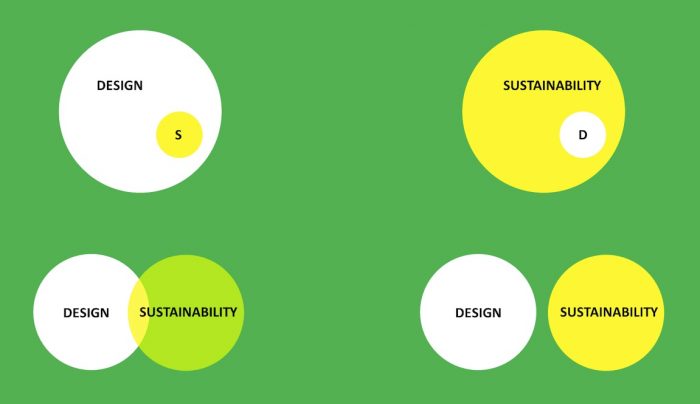In most cases, it’s clients who drive the ambitions of deep-green buildings. But how can architectural firms lay the groundwork for more projects that push the boundaries of sustainability?
In an August article evocatively titled, “Why We Let Ourselves Do Mediocre Work,” BuildingGreen’s Tristan Roberts challenges architects who want to do exceptional, challenging sustainability work. Don’t wait for “the unicorn client,” he argues. In the absence of an owner with a strong vision of sustainability, the onus is on the architect (or the consultant) to define the possibilities.

Even when the design team takes the initiative to pursue more sustainable architecture, the focus is often narrowly on project delivery. Project delivery is no doubt a critical layer, but its capacity to bring about real change is limited when employed simply as a tide that can lift all boats. Technological silver bullets related to the practice of architecture (simulation software and such) are similarly limiting: While powerful, energy modeling alone won’t create a commitment to a net zero building.
Over the past 18 months, I’ve been a member of a sustainability strategic planning team at my firm, which has been working to develop and implement actions to more effectively and consistently deliver sustainable design across all offices and practice areas — even in the absence of a unicorn client!
We began our planning process with the help of a sustainability consultant, who conducted a “gap analysis” to identify shortcomings in organizational policies, procedures and culture that are hindering the desired outcomes. I outlined that effort in a blog post last year. Our soon-to-be-rolled-out 2018 Sustainability Strategic Plan is heavily informed by the gaps identified in that initial effort.
While the specific gaps and the resulting plan might be unique to our organization, “firm culture” seems to have universal relevance. It has the ability to influence virtually all aspects of operations. Let us look at some areas that have emerged as important ingredients of firm culture, with the end goal of developing a minimum sustainability standard for all projects.
Leadership vision and policy
If you pose questions to your firm’s leadership about revenue projections and market area growth, you’re bound to get concrete answers. Now, consider asking similarly strategic questions about sustainability:
- What values are guiding our firm’s approach to sustainability, especially when the client is not asking for it?
- What are our firm-level goals for sustainable design accomplishments in the next five or 10 years?
- How much of our project fee typically is or should be dedicated to building performance analysis?
- How does sustainability figure into our hiring and staff performance review processes?
- What is the criteria for our partnering with other architects and mechanical-electrical-plumbing consultants?
The answers, or lack thereof, will provide important insights. They shouldn’t be too difficult to answer, especially for firms that have signed on to the Architecture 2030 Challenge or the AIA 2030 Commitment. But they tend to be.
Mid-level and junior staff, even those who consider themselves sustainability champions, look up to the leadership for an overarching vision that can motivate them and guide their actions. Crystalizing such guidance in writing is even better.

Project delivery roadmap
Projects move through predictable, standardized phases ensconced in industry-standard practices and contract law (programming, schematic design, design development, etc.). We applied the gap analysis to our standard project delivery approach to create a “project delivery roadmap” of the typical design delivery process, and to identify specific opportunities and milestones to better integrate sustainable design. That exercise raised interesting questions. Among them:
- What should a project’s sustainability goals be, and how should they be documented and tracked?
- What variables should be assessed at what phases of the project?
- How will different project team members be integrated?
- Who is accountable for the project’s overall sustainability success?
- How will decisions be tracked and communicated?
Transparency and accountability
Transparency is a tool for knowledge dissemination and improved accountability. It enables the sharing of performance data and of lessons learned across different project types and locations. To visualize this, consider the following:
- What sustainability variables tracked across projects should be common knowledge?
- Are there consequences, within reason, to not being transparent or being transparent but falling short?
- Is accountability centralized or distributed? How does it work in either case?
- How can transparency be leveraged to improve performance?
Active learning
Our education, formal and otherwise, is a foundation to our actions. Even then, investing in passive learning can yield little concrete action. If staff members of a firm had to make an elevator pitch to a client about the firm’s sustainability services, how similar or different would their various pitches be, and how effective?
Active learning seeks to engage the audience better by tailoring information to the audience’s interests, by making new information less intimidating and by incentivizing participation. A plan for active learning might include:
- Baseline vocabulary
- Need-based formal training
- Modes of engagement that would make internal learning less passive
- Reinforcing of a coherent firm culture to promote engagement in shared purpose
Conclusion
The goal of better focus on sustainability is to do better design. Achieving lasting change can be a challenge in any environment, let alone the often risk-averse field of architectural practice.
For me, innovation, insight from numbers, and a project sustainability story arc are powerful motivators that can be employed in combating inertia and creating a firm culture conducive to great, sustainable design. Here is some recent suggested reading from other online sources on this topic:
- How to Be a Sustainability Champion in Challenging Times (Rocky Mountain Institute)
- Why We Let Ourselves Do Mediocre Work (BuildingGreen)
- Know Thy Client: 9 Un-Green Strategies for Delivering Better Buildings (BuildingGreen)
What do you think? Are there issues you consider important that I left out? It would be great to hear your feedback in comments below.
Ramana Koti, LEED AP BD+C, is a building performance analyst at Lord Aeck Sargent and a certified ASHRAE Building Energy Modeling Professional. He is based in Atlanta and blogs frequently on topics related to sustainability in the built environment.



Great article Ramana! I like your approach. With each passing year in this work I hear the same dozen excuses for why firms aren’t achieving better performance. And when we study what happens when we do, we find that all the excuses are just that – excuses. They are only real barriers because we allow them to be true. And as soon as we stop they cease to exist almost overnight. Thanks for your courageous work!
I’m glad you enjoyed reading the post, Phaedra. And thank you for your feedback.